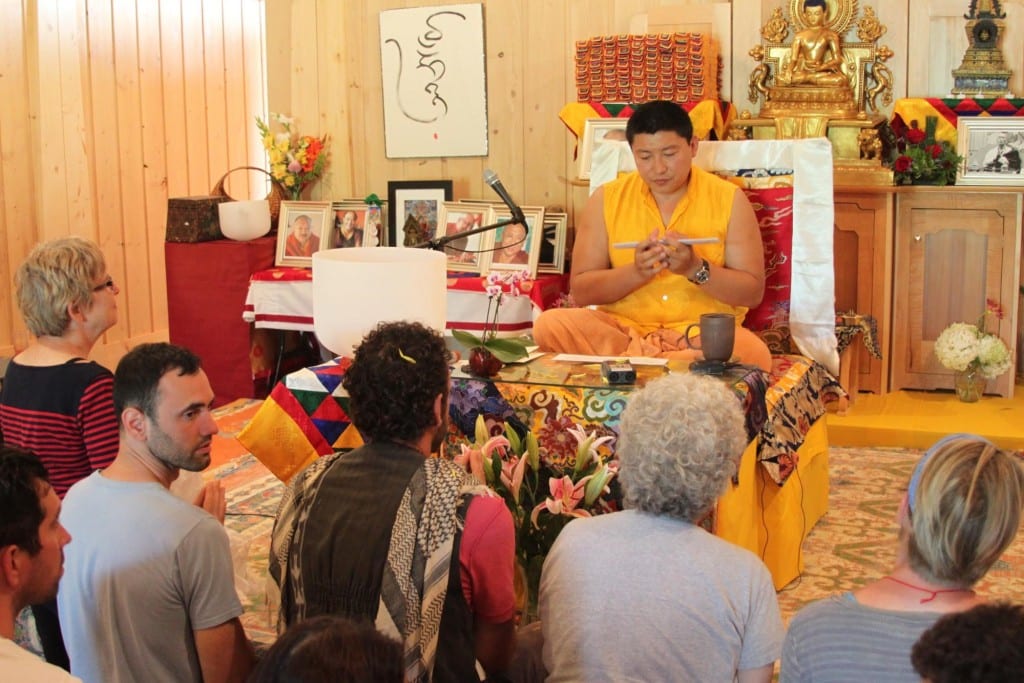Defining Dharma
Phakchok Rinpoche defines three core principles of the Dharma. In this audio teaching, he reminds us of the Buddha’s summary of his teaching. Then he asks us to use these to evaluate our practice.

Defining Dharma: The Three Steps
The Buddha taught that the Dharma has 3 steps:
- Don’t engage in wrong actions
- Instead, perform good actions
- Tame your mind
Physical actions operate at a very gross level and we usually know whether those are wrong and unskillful. However, verbal actions can be a bit more subtle. And the mental or emotional level actions move quite subtly. We may need to investigate carefully to see what’s happening.
What is the difference between right action and wrong action? Rinpoche reminds us that the most important influence is the intention, the state of the mind we have the moment we behave. Our intention defines if the action is the right action or wrong action.
Defining Dharma: Focus on Mind
Rinpoche explains the meaning of the Tibetan term “insider Buddhism” as taught by his teacher, Nyoshul Khen Rinpoche. Here, the term insider does not have a sectarian meaning but refers to looking inside– at the mind. The whole experience of life depends on the mind, our own mind. Everything that arises comes from the mind. Thus, we understand that the focus of dharma is inside the mind. We don’t think that happiness or difficulties and sufferings come from the outside. Good actions and bad actions similarly are not defined by external sources, but from within–inside the mind.
Dharma means simply not doing bad actions, doing good actions, and taming the mind. Action can be based on 3 poisons: agitation/anger, attachment, and ignorance. Ignorance in this context means not defined clearly or not knowing clearly. The quality of action (good or virtuous and bad or non-virtuous) is defined by your intention, your motivation. If you are thinking something harmful, that is bad action. Good action is motivated without anger, without attachment, without ignorance. And if act without the three poisons, our actions are virtuous.
How to Tame the Mind?
We find two different paths to tame the mind in the Buddhist teachings. First, we apply our discerning, meditation, and mind training practice. And all of these practices are mind-based. We are engaging with the conceptual mind. This includes shamata meditation and mind-training practices such as loving-kindness and compassion.
Then the second path is where we engage with wisdom. Here we talk about the mind nature or the essence of the mind.
Are you a practitioner or not? First step– reduce bad action. Next, increase good action. Then, transform the mind. That means you are a Dharma practitioner!
Reflection Exercise
This week, begin with the grosser level. Think before you act, and consider your intention. Try to keep a journal or some short notes to observe your progress. In traditional stories, people often trained by piling up black stones when they did negative actions, and white when they did positive ones.
These days we can use all sorts of fancy apps to record our efforts. The method doesn’t matter–we can use whatever works for us. We can post notes for ourself around our space, reminding us to pay attention. And every day, we can check our own actions.
Don’t be too hard on yourself, or judge yourself. If you have a lot of black marks, then you have a great opportunity to improve! We can simply notice where we tend to go off-course. As we start paying attention to our behavior patterns, we can learn where to self-correct.
By the end of a week, or two weeks, or a month–have your actions started to shift? In what direction?










Responses